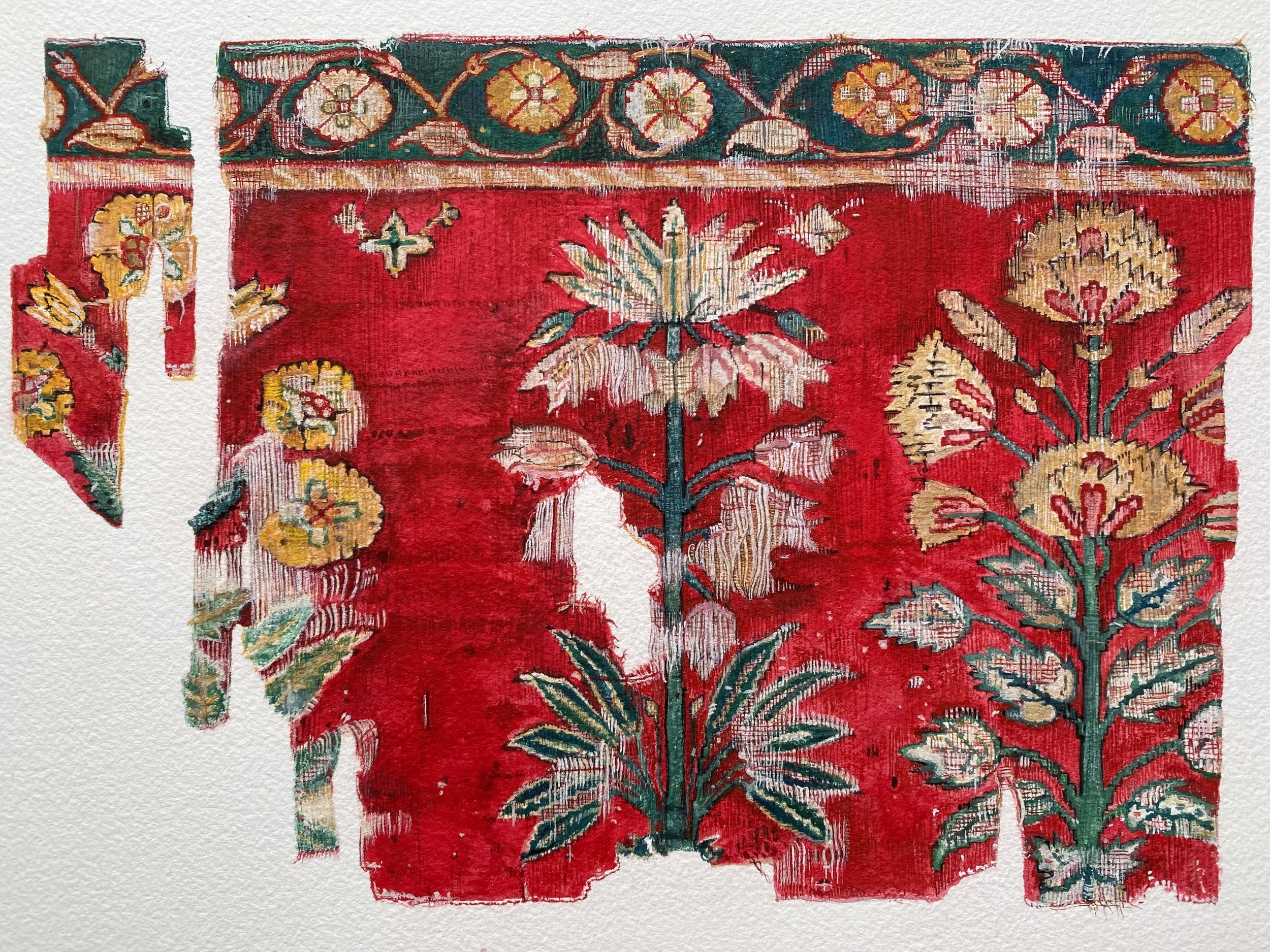Artist Spotlights

Chaeri Kim: Love, Light, Gravity
Love, Light, Gravity is a solo exhibition highlighting nineteen works from an artist with a forceful style that permeates her work regardless of the employed medium. Chaeri Kim’s work in this show ranges from crisp graphite drawings to billowing chalk compositions on paper and tufted figures on cotton. The variety in this collection of works, deemed “dream journal” by the artist, show us the many ways she records her own tract of memory as it integrates into her psyche or disintegrates into the background of her practice.

Grace Nkem
“I think of my collage-like, painted images as browser pop-ups and I draw upon compositional clichés and visual conventions we encounter when interacting with screens: icons, endless interfaces, a compacted depth of field, cut-paste image-overlay, and so on. It seems impossible to produce a twenty-first century painting that is not informed by digital images, given that our contemporary understanding thereof is inexorably shaped by and tied to their existence in cyberspace, though we only spend fractions of a second with some of the images we see on screens.”

Maria Rasheed
Maria Rasheed was awarded the September 2023 PGV Artist Grant.
“My work is an exploration of home, migration, loss and memory. It’s a process that allows me to document and archive associations one develops with people, places and objects.”

Farah Mohammad
“In Time Won’t Tell I wanted to show work that engaged with an urge to know ourselves separate from the histories that we have inherited.”

Tiantian Lou
“Physically, my processes are fast segments of different mediums and actions, involving elements of surprises. Conceptually, my works are evolving testing grounds for me to investigate the relationship between the human body and the built space.”

Saloni Shah
“My projects typically commence with extensive research into the history of the patterns that I am dealing with and compiling multiple sources to piece together the timeline of the story I am narrating through the work. “

Erika Shiba
“Through my practice of printmaking and drawing I create a psychological universe which I like to call a “mentalscape”; the work I make exist as documents of discovery in this space.”

Anne Canfield
“Houses, trees, neighborhoods… I love to inventory a place, taking careful note of small hints, reminders of the lived day; umbrellas set out to dry, or laundry hanging, a bicycle parked, a garland in a window… these little suggestions nudge me to thread them into my own quiet narratives.”

Virginia Wagner
“My work looks at cycles of construction and destruction. I reference locations where the stakes of this struggle are high: flood zones, areas of fire, and vulnerable shelters.”

Hiro Sakaguchi
“ Drawing is the bone structure of my work to give shape to my thoughts, imagination or daydreams. Painting, on the other hand, emphasizes what I want to say by using a variety of paint applications to form an expression.”

Morgan Adler
“These two works were done in the depths of quarantine. The landscapes are of nowhere in particular, but rather a meditation on a place with no time, logical space, or habitable weather conditions. I think of the details of clashing paint, hypnotic fluidity, and urgent strokes as narrators of the backdrop they depict.”

Laini Nemett
“Many of my paintings look at the ways humans intervene in the landscape to build our homes, as well as the ways the land can reclaim these spaces. Nature itself has been the most important reference in my recent work.”

Ruhee Maknojia
“My art process is rooted in patience. I often work with hand-painted patterns and repetitive strokes, a process that can take a lot of time, especially when working on large-scale projects. My work ranges from immersive installations to small-scale paintings, with the play in scale inspired by Mughal-era miniature paintings and large architectural gardens.”

Cheryl Mukherji
“I think about domestic labor often in my work, not washing dishes, but the work it takes to stay related to someone, even my mother who lives across distance and time zones. I work with photography, text, video, printmaking to realize these ideas. My process is slow and intuitive, structured within daily routines and bursts of art-making in my living room which alternates as my studio. ”

Takuji Hamanaka
“My works are more like hybrid of two ancient craft-woodcut and stained glass both of which I have a good deal of experience.”

Noga Cohen
“My process is very gestural and experimental. My background is in photography, so I’ve earned my knowledge in sculpture through experimenting with materials and discovering forms, textures and shapes that excite me.”

Ivana Carman
“My process is varied but I’m always taking from my life experiences and surroundings. I’ll usually start by drawing or painting from observation and continue investigating an idea in the studio with collage, printmaking, painting, or some combination of all three.”

Melissa Joseph
“I work largely intuitively, and I feel like when I’m making I become a channel for collective memory or knowledge to pass through. It feels directed in a way that is unlike other things I do.”

Hafsa Riaz
“The line etching process is the longest as I build up the drawing with repetitive marks in circles, instead of straight-line drawings. This process is almost meditative. A monotone color palette dominates most of my works as it enhances the nostalgia of the visuals.”

Keli Safia Maksud
“My practice involves a lot of research and the work that is produced as a result of this research is interdisciplinary. I am interested in ideas around identity formation and enjoy thinking about these ideas from different angles, which then necessitates working in different mediums.”